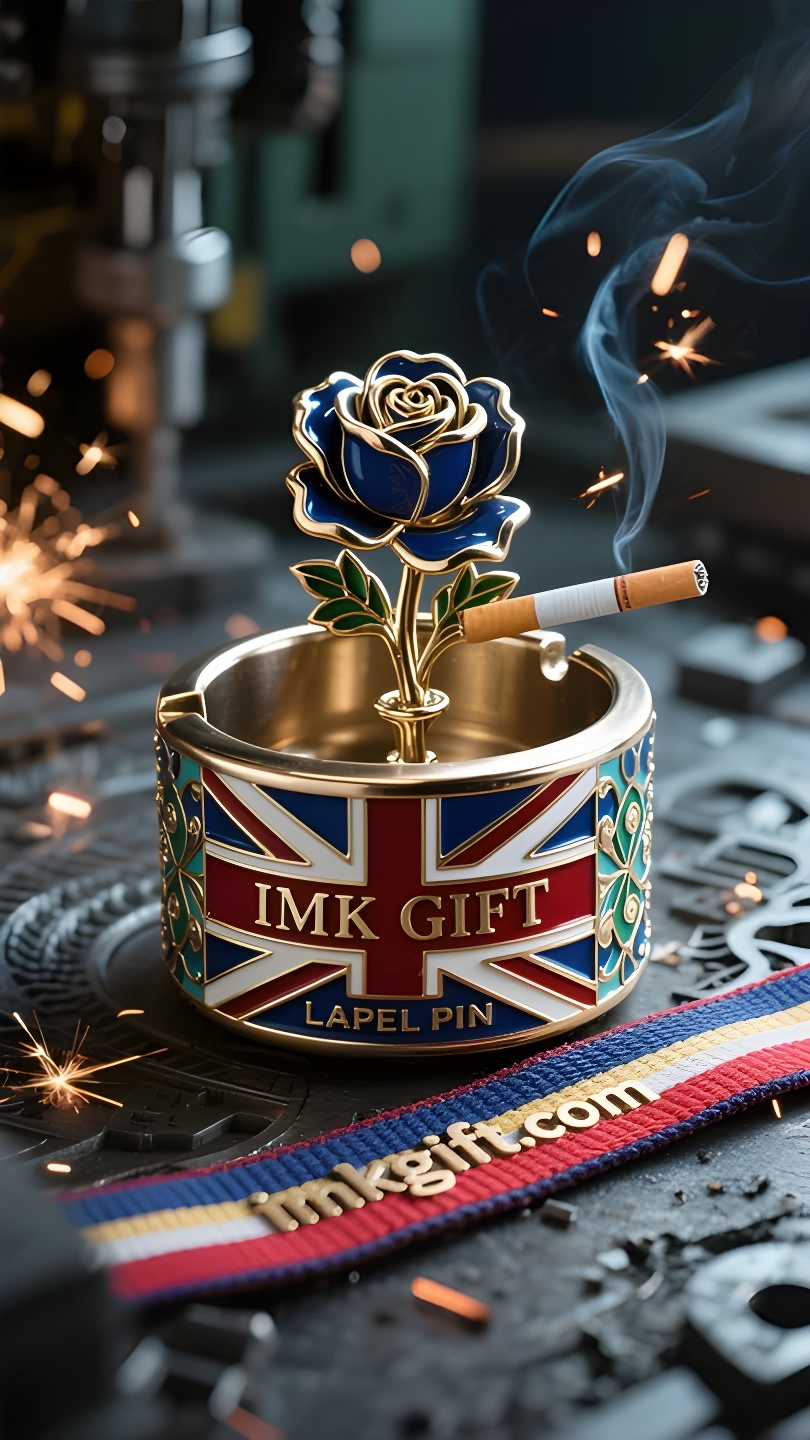in997-Above-the-Ashes-Roses-in-Bloom
▼
In England in April, the St. George’s Cross flag spreads its red and white warp in the spring breeze. This land has never lacked stories, and at this moment, the Tudor Rose ashtray is silently telling the profound meaning of the interweaving of history and rebirth. The Tudor Rose, this red and white flower, was originally the period of the blood feud between the Lancaster and York families. When it was cast into the outline of an ashtray, a flexible metaphor grew out of the coldness of the metal: every grain of ash that fell is the precipitation of the past; and the rose carving that never fades is like a flower of reconciliation blooming in the ashes. Just as the flames of the War of the Roses in 1455 were eventually replaced by the golden age of Elizabeth I, the ashtray carries not only the embers, but also the wisdom of a nation reuniting in the broken. The red of the St. George’s flag is now reflected by the silver glow of the ashtray. This flag once accompanied the Crusades, witnessed conquest and perseverance, but now it is reflected on the mirror of the ashtray – history never stagnates due to gray precipitation, just as the legend of St. George slaying the dragon forever shows: true courage is to choose to light a fire after seeing the abyss clearly. When the English reread the epic of “St. George and the Dragon” in April, perhaps they should gaze at this ashtray: it teaches us to embrace the burning pain with the heart of a vessel and absorb the suffering with the roots of a rose. Every moment is a new bud growing out of the ashes of history; every breath can make the red and white interwoven beliefs flutter in the wind.
W Anglii w kwietniu flaga z Krzyżem Świętego Jerzego rozpościera swoją czerwoną i białą osnowę na wiosennym wietrze. Tej krainie nigdy nie brakowało opowieści, a w tej chwili popielniczka Tudor Rose milcząco opowiada głębokie znaczenie przeplatania się historii i odrodzenia. Tudor Rose, ten czerwony i biały kwiat, pierwotnie był okresem krwawej waśni między rodzinami Lancaster i York. Kiedy wrzucono go w kontur popielniczki, z chłodu metalu wyrosła elastyczna metafora: każde ziarnko popiołu, które spadło, jest opadem przeszłości; a rzeźba róży, która nigdy nie więdnie, jest jak kwiat pojednania rozkwitający w popiołach. Tak jak płomienie Wojny Dwóch Róż w 1455 roku zostały ostatecznie zastąpione złotym wiekiem Elżbiety I, popielniczka niesie nie tylko żar, ale także mądrość narodu jednoczącego się w rozbitych. Czerwień flagi św. Jerzego odbija się teraz w srebrnym blasku popielniczki. Ta flaga kiedyś towarzyszyła wyprawom krzyżowym, była świadkiem podbojów i wytrwałości, ale teraz odbija się w lustrze popielniczki – historia nigdy nie staje w miejscu z powodu szarych opadów, tak jak legenda o św. Jerzym zabijającym smoka na zawsze pokazuje: prawdziwą odwagą jest wybór rozpalenia ognia po wyraźnym zobaczeniu otchłani. Kiedy Anglicy czytają ponownie epos „Święty Jerzy i smok” w kwietniu, być może powinni spojrzeć na tę popielniczkę: uczy nas ona, jak objąć palący ból sercem naczynia i wchłonąć cierpienie korzeniami róży. Każda chwila to nowy pączek wyrastający z popiołów historii; każdy oddech może sprawić, że czerwone i białe splecione przekonania zatrzepoczą na wietrze.
四月的英格兰,圣乔治十字旗在春风中舒展红白经纬。这片土地从不缺少故事,而此刻,铎玫瑰烟灰缸正以静默的姿态,诉说着历史与新生交织的深意。
都铎玫瑰,这朵红白双色之花,原是兰开斯特与约克家族血仇的句点。当它被铸成烟灰缸的轮廓,金属的冷硬中却生长出柔韧的隐喻:每一粒坠落的烟灰,都是过往的沉淀;而永不褪色的玫瑰雕纹,恰似在灰烬里开出的和解之花。正如1455年玫瑰战争的烽烟终被伊丽莎白一世的黄金时代取代,烟灰缸承载的不仅是余烬,更是一个民族在破碎中重聚的智慧。
圣乔治旗的红,此刻正与烟灰缸的银辉相映。这面旗帜曾随十字军东征,见证过征服与坚守,如今却在烟灰缸的镜面上投下倒影——历史从不因灰暗的沉淀而停滞,正如圣乔治屠龙的传说永远昭示:真正的勇气,是在看清深渊后依然选择点燃火光。
当英格兰人在四月重读《圣乔治与龙》的史诗,或许该凝视这方烟灰缸:它教会我们以器皿的胸怀包容灼痛,用玫瑰的根系吸收苦难。每一个当下,都是历史灰烬里长出的新芽;每一次呼吸,都能让红白交织的信念在风中猎猎作响。
▼
Contact Us
📞 Tel: +0086-760-85286839
📧 Email: sales3@imkgift.com








